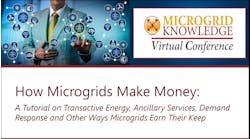Meg Matt, Association of Energy Services Professionals
At the 24th national conference of the Association of Energy Services Professionals, Steve Lightbourn, with the Wisconsin Energy Conservation Corp., shared important lessons learned from the rollout of community-based energy efficiency programs.
WECC partnered with 1.) Wisconsin Public Service Corporation (WPS) and Focus on Energy to deliver the iCanConserve Programs and 2.) the U.S. Department of Energy (DOE) and the cities of Madison and Milwaukee to deliver the Green Madison and Milwaukee Energy Efficiency (ME2) residential programs. (The DOE program as a single entity has been named the Wisconsin Energy Efficiency (WE2) Program.)
The Wisconsin programs paired community-based volunteers with consumers to assist with updating their homes and making them more energy efficient.
According to Lightbourn, although the overall programs were successful, several strategies did not work:
- Mass mailings – these can be expensive, and deliver far less value than mailings that are targeted based on home characteristics.
- Free assessments – the program organizers learned that overall effectiveness rates were higher when consumers were investing in the project from the beginning
- Extend the program over too long a period of time. Different versions of the program lasted for thee years (too long) and 1.5 years (too short)
- Quality over quantity: trade a higher frequency of meetings with energy advocates for fewer, more substantive meetings
Lightbourn also pointed out strategies that were effective:
- Show them the money: Cash incentives led to increased word of mouth and media coverage
- Use local community volunteers. Especially in small neighborhoods, if people related to the volunteers, participation and effectiveness rates were higher
- Personalized attention
Support of government is something of a mixed blessing, Lightbourn said. It can be helpful if one politician makes it a part of his or her agenda; but if it becomes to closely associated with that person, the replacement may be reluctant to embrace it.
The overall success of the programs was tracked and measured. One of the programs, We2, saw more than 2,000 energy efficiency upgrades completed on homes. The average energy savings for the WE2 program’s portfolio of residential projects exceeded the goal of 15% at nearly 30% in total energy savings. Combined energy savings of residential activities were: 682,837 kWh; 700,997 therms; 22,467 gallons of fuel oil; or $900,796 in estimated energy costs saved.
Conservative estimates of economic impacts included the employment of more than 100 participating residential auditors and contractors and more than $30 million in total project costs expended in the targeted communities.
Close to 850 energy efficiency professionals attended the AESP conference in San Diego Jan. 27-30.
Meg Matt is president and CEO of the Association of Energy Services Professionals.







